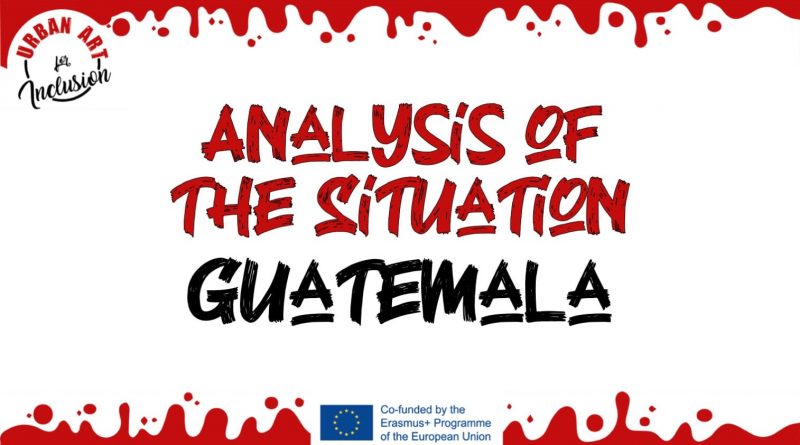Analysis of the situation: Guatemala
In the frame of Local Activities I, each project organisation had to analyse the situation of young migrants and urban art in its country. Here you have a summary of the text written by Iniciativa de Desarrollo Educativo Artístico y Social ONG (IDEAS) concerning the situation of Guatemala.
MIGRATION:
In Guatemala, according to the statistical records, migration began in the 1960s and until 1994 the main reasons to emigrate were the armed conflict and the need to find better job conditions. From 1995 to 2010 emigrants raised from 400,000 to 1,600,000, with most of them emigrated towards the United States. Currently, there are several causes and situations that force people to emigrate. Guatemala is geographically located in areas prone to natural disasters, which left high level of destructions. Another factor is the violence, as there are gangs that lead young people vulnerable to crime due to the economic situation in which they live in their communities; if young people do not accept to participate in these gangs they are vilely murdered, for this reason they prefer to leave the country. Another type of violence that increases migration is that many young women flee their homes or love relationships because their lives become violent because they are women. The lack of education, job opportunities and health are also other reasons that force people from Guatemala, especially young people, to emigrate. Young people from 13 to 29 years old represent the 33% of the total population in Guatemala and, unlike the 1980s and 1990s there the emigrants were mostly adults, today it is estimated that the majority of people who emigrate are less than 30 years old. Indeed, according to a survey carried out by IOM in 2016, 13.5% migrated before their 18th birthday. Many of them decide to take the risk of travelling to the United States in an undocumented way.
According to data published by the UN in 2019, in Guatemala there are 80,421 immigrants, which represent 0.46% of the population.
URBAN ART:
This culture arrived in Guatemala at the end of the 80s and the media were in charge of spreading it to all corners of the country, doing so the first rap groups, break dancer crews, graffiti artists, etc., emerged. However, due the expansive phenomenon of the gangs, the movement stopped because taking the streets to carry out activities such as graffiti or breaking was considered as a threat to the gangs that at that time took possession of the neighbourhoods. At the end of the 90s, interest in urban culture reappeared, gangs changed their format and stopped using walls as methods to mark territory and graffiti and activities that promoted the philosophy of hip hop gave way. Small groups in various urban-marginal settlements and in the historic centre of Guatemala City began to practice some of the disciplines of hip hop and identify themselves with the culture. This is probably linked to the influence that young people who have immigrated to the United States bring when they return. However, it should be noted that young people felt more identified with Latin American hip hop than with the American one. This reason could explain the fact that Guatemalan rap continues to be a phenomenon relatively outside the market, and although it is no longer marginal. The dispersed groups existing in the country started to articulate and organize themselves after the organisation of the first hip hop festival, called “Universe of Styles”, in 2006. Since then, an annual event has been held to bring together Central American young people from the hip hop culture. There are also several regional and world breakdancing battles, graffiti shows and rap parties organized in Guatemala. If it worth of mentioning the fact that young people from indigenous cultures have redefined the cultural elements of hip hop by adapting them and adding elements of their mother culture. Nowadays, hip hop is currently in a phase of expansion and it has great appeal in Guatemala.

